
Ocean trade routes realign as tariffs and port fees kick in
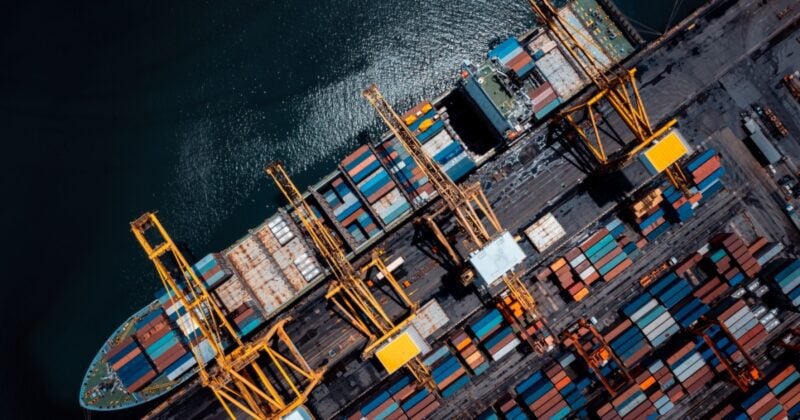
It is an old truth in logistics: cargo always finds a way. This has been very true for 2025, as slower growth on the tariff-hit Transpacific trade has been more than offset by faster expansion elsewhere.
“Trade patterns are shifting, but the underlying momentum remains positive,” said Niki Frank, CEO, DHL Global Forwarding Asia Pacific. “Emerging markets are driving much of this year’s growth as companies rebalance sourcing and production beyond traditional trade lanes.”
The latest Global Port Tracker estimates U.S. box import volumes will be 3.4 percent lower this year than in 2024. Yet where one trade lane is squeezed, others open up. Container Trade Statistics (CTS) reports that containerized import levels in the first eight months of 2025 have grown across most regions except North America.
Sub-Saharan Africa, the Indian Subcontinent and Middle East, and South and Central America recorded year-to-date import increases of 16.4 percent, 8.7 percent, and 7.5 percent respectively. Europe posted a 7.3 percent rise, as imports from the Far East and the Indian Subcontinent and Middle East were up more than 8.5 percent this year through August.
On the export side, the Far East and the Indian Subcontinent and Middle East posted the largest year-to-date gains, up 6.4 percent and 5.9 percent.
The upshot is that over the first eight months of 2025, global container volumes shipped totaled approximately 126.75 million TEUs, representing a 4.4 percent increase compared to the same period in 2024, according to CTS.
Port congestions amid demand uptick
Despite healthy demand, multiple effects have weighed on container shipping efficiency in 2025 – for instance, geopolitical tensions, vessel rerouting away from the Suez Canal, and evolving U.S. trade policies. Congestion at key ports remains a persistent challenge, as noted in DHL’s October Ocean Freight Market Update.
Berthing delays continue to impact liner schedule reliability, with ongoing port congestion in Hong Kong, China, and northern Europe. Super Typhoon Ragasa further exacerbated congestion in Southern China and Hong Kong in September.
On the European front, the ongoing strike at the Antwerp port has contributed to the narrative of port congestion. The port’s closure has a major impact on key sectors such as automotive, chemicals and food. Antwerp’s backup port, the Port of Rotterdam in the Netherlands, is also facing a strike of its own from lashers – workers responsible for securing containers.
Softening spot rates in Q3 are also leading to an increase in blanked sailings, which could cause additional disruption for shippers. The update highlighted that over the course of September, blanked capacity has been continuously adjusted upward—from less than 5 percent on all trade lanes to around 15 percent.
Carriers are evidently taking measures to halt rate decline around current lows. However, analyst firm Linerlytica noted that even with the resumption of services after China’s Golden Week, rate hikes have not manifested as expected.
U.S. port fees adding to challenging equation
U.S. trade policy is putting further pressure on the container shipping industry. By 14 October, U.S. port fees payable on Chinese-built, owned, or operated vessels calling at U.S. ports will be enforced. The latest guidance from U.S. authorities confirmed that ships unable to show advance proof of payment will be denied clearance to enter the country.
This shifts the onus for payment to the vessel operator and away from U.S. Customs and Border Protection (CBP), which will collect the levy. A fee of US$50 per net ton for vessels owned or operated by Chinese entities will be applied, increasing by US$30 per year over the next three years.
Chinese-made vessels operated by non-Chinese entities will also be impacted, with a fee of US$18 per net ton or US$120 per container, whichever is higher. This fee will rise by US$5 per net ton or 28 percent per TEU each year until 2028.
HSBC Global Investment Research found that 71 percent of global container ship capacity is non-Chinese built, and that only 21 percent of capacity on the Transatlantic and Transpacific trades consists of China-built tonnage. Just 15 percent of U.S. port calls in 2024 were made by Chinese-constructed vessels.
Carriers have reacted by replacing Chinese-built vessels on trades to and from the U.S. ahead of the fee deadline. Some, like container ship tonnage provider Seaspan, are in the process of relocating some 100 Hong Kong-flagged vessels to Singapore to avoid the new charges. Most leading container lines are expected to be largely unscathed by the new port fees following vessel redeployments, with some indicating that they will not introduce surcharges.
“While new port fees and regulatory measures are creating short-term uncertainty, the market has shown time and again that it can adapt,” said Bjoern Schoon, Senior Vice President, Ocean Freight, DHL Global Forwarding Asia Pacific. “Trade will continue to find efficient pathways, even as global shipping patterns evolve.”
Back and forth with fees
Chinese carriers COSCO and OOCL are expected to face the greatest impact. Both operate significant Chinese-built fleets and fall directly under the new regulations. Analysts estimate the combined cost to COSCO and its subsidiary OOCL could reach up to US$2.1 billion in 2026.
This financial hit raises questions about how the two carriers can remain competitive in the U.S. market, particularly if rivals avoid the new charges through fleet redeployment. Lars Jensen, CEO of Vespucci Maritime, noted that the fees were substantial and would leave the two carriers at a competitive disadvantage, as they could not pass on the costs to shippers unless their competitors followed suit.
China has pushed back by implementing a port fee for non-Chinese built vessels entering Chinese ports from 14 October, if the vessels have more than 25 percent U.S. ownership. All carriers are impacted, as the regulation includes chartered vessels from companies with above 25 percent U.S. equity, such as Seaspan.
These retaliatory fees are estimated by Linerlytica to be at US$2.3 billion in the first year and would further increase. Carriers will be subject to these fees with immediate effect, so major reshuffling and disruption can be expected in the next weeks if the fee structure remains unchanged.
Adapting to continued volatility
The ongoing challenges from tariffs, port fees, congestion, and numerous other factors have become a persistent issue. Various external factors, outside of the ocean freight and supply chain perspectives, have contributed to market volatility, which ironically remains the only consistent factor.
Today, the essential competitive advantage for businesses is to be flexible and adapt to this ever-evolving situation. “Our relationships with a diversified carrier pool, together with our agility to optimize our services for a shifting trade landscape, are designed to help customers better navigate market volatility,” said Frank.
MORE FROM THIS COLLECTION
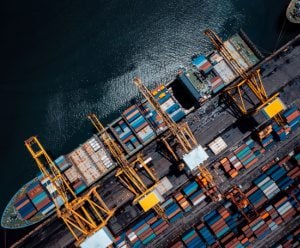
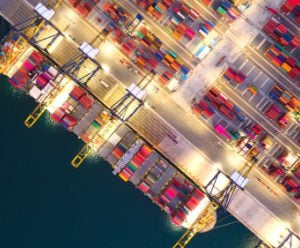
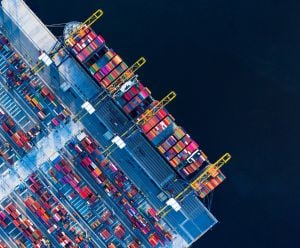
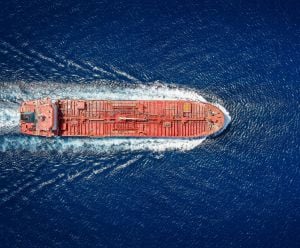
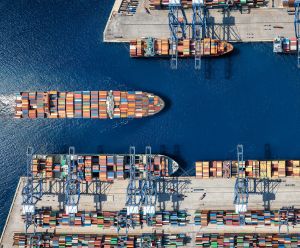


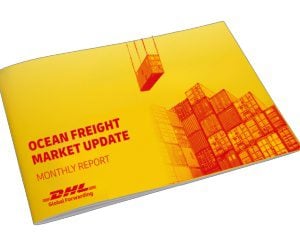
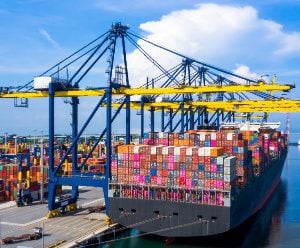




 English
English